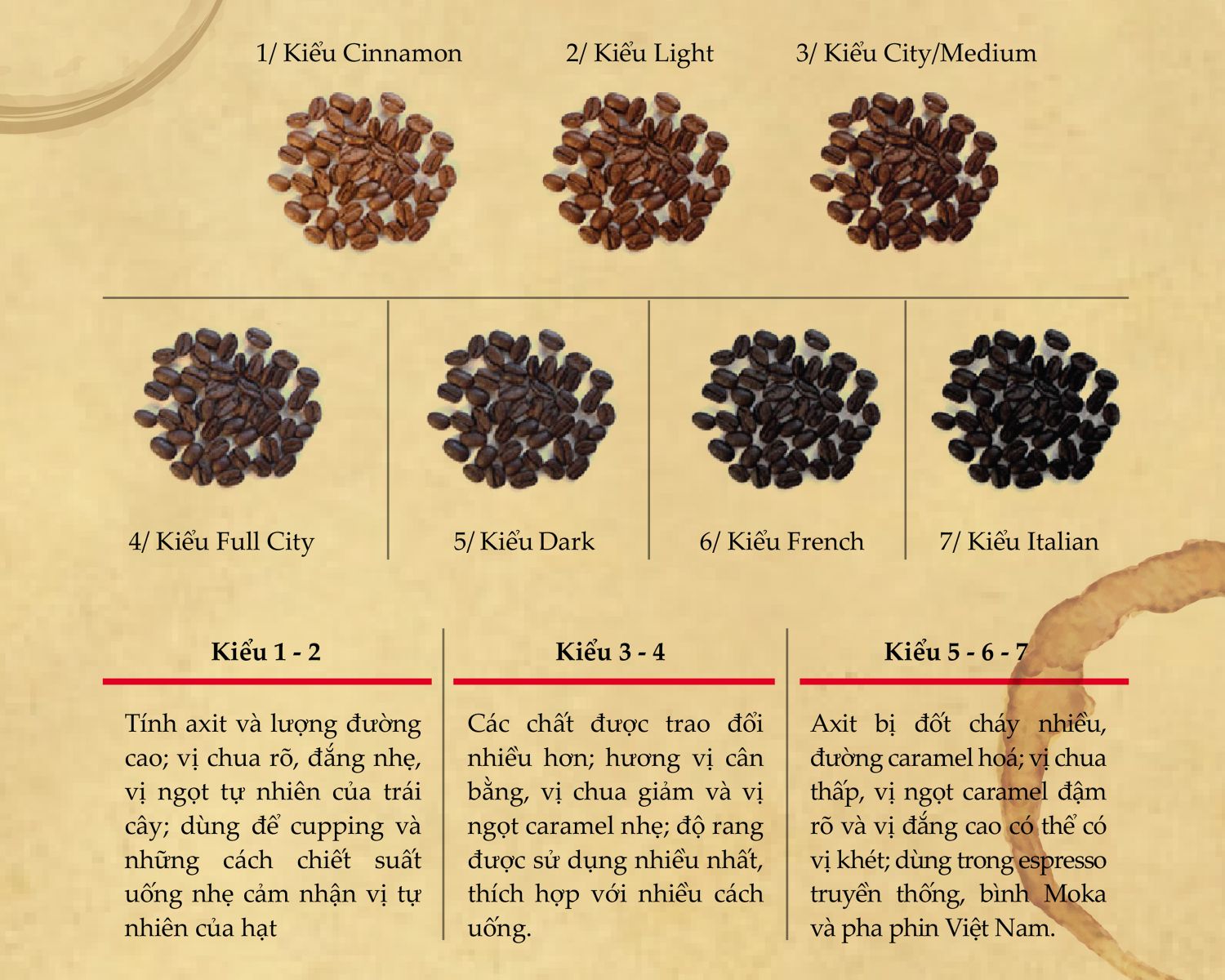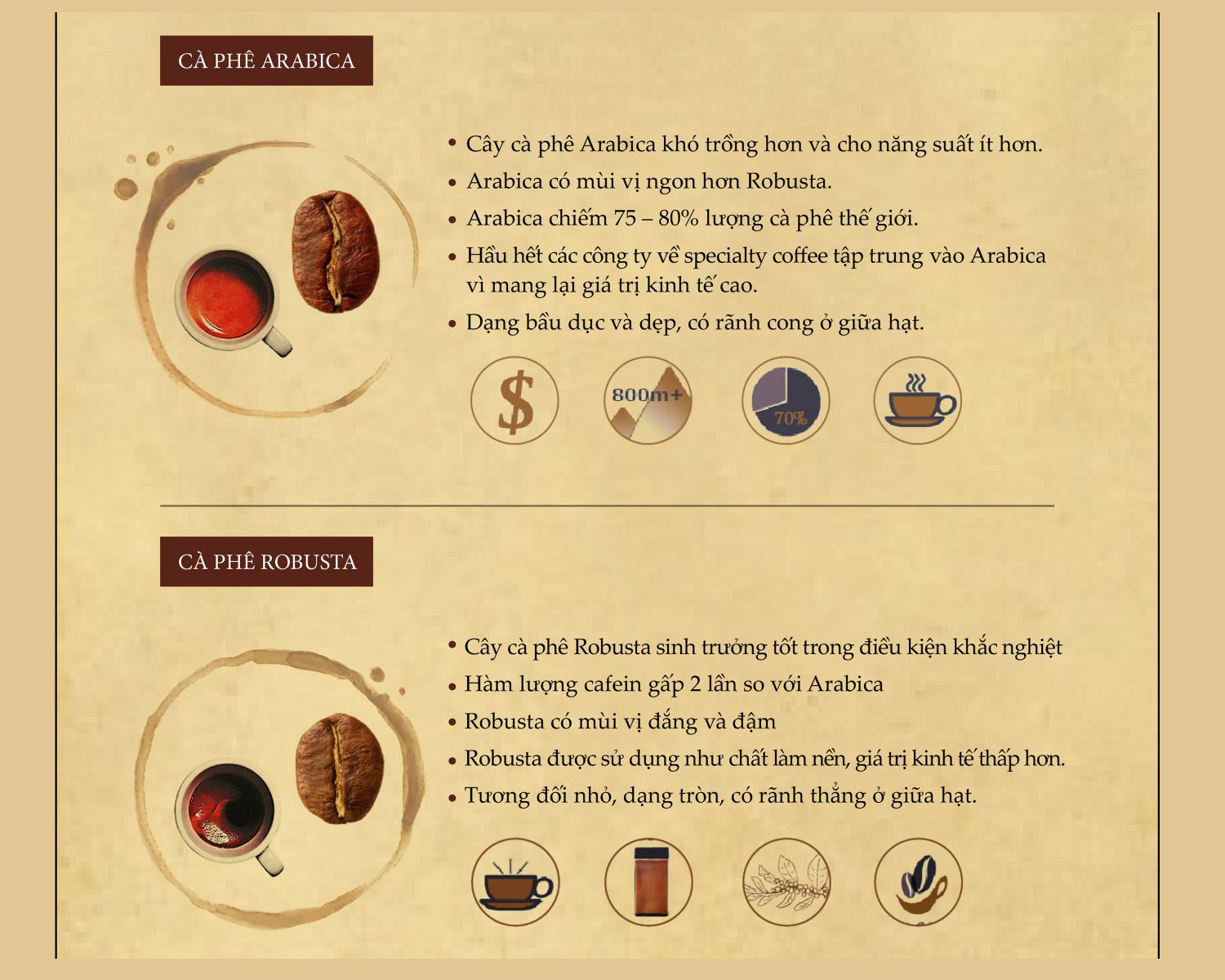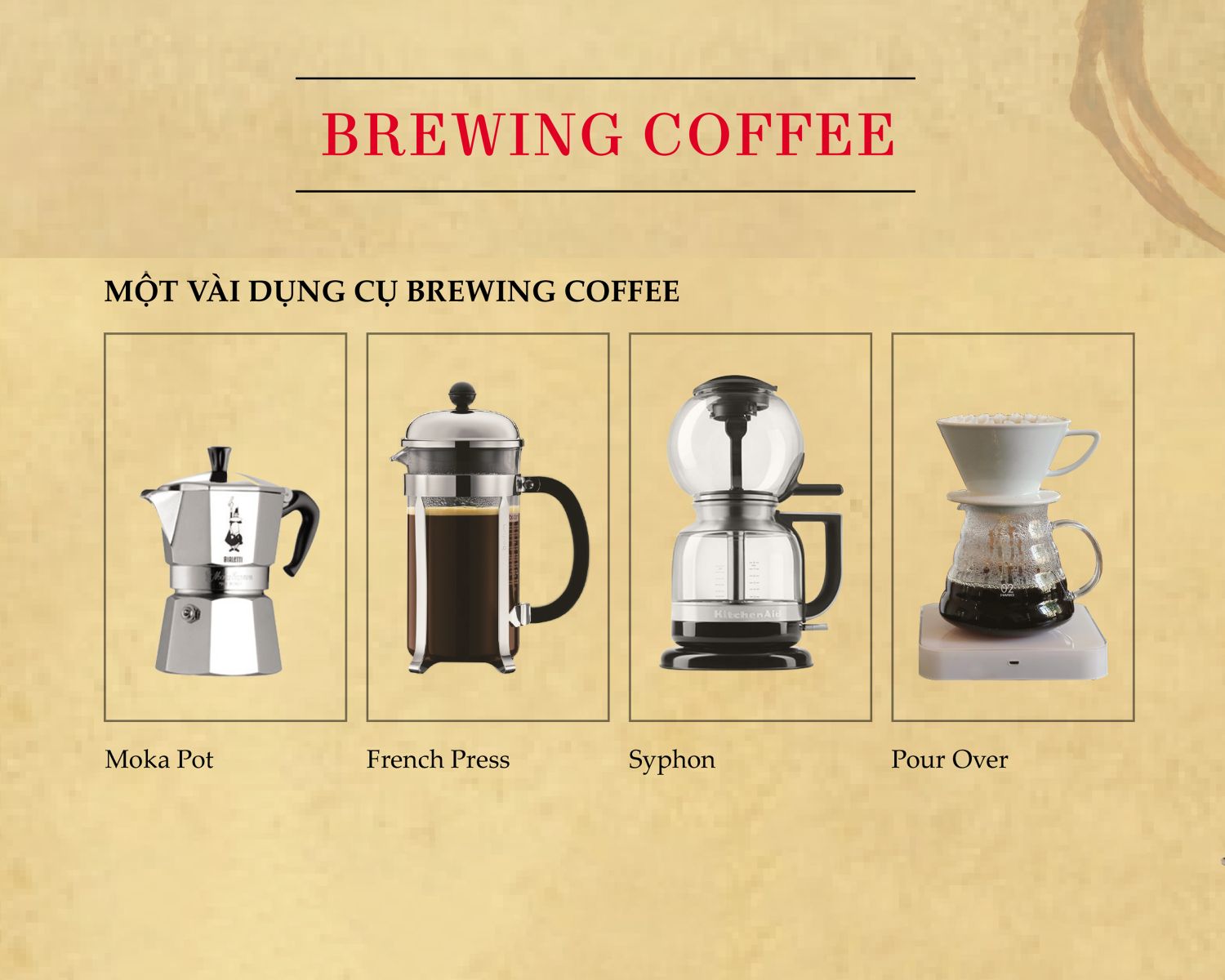First of all, coffee has two main different varieties: Robusta coffee and Arabica coffee. Rubusta, as the name suggests, is very robust, ie strong, a lot of caffeine, a lot of insomnia. Arabica, on the other hand, is less toxic, but has more aroma (aroma). The art of coffee production begins with the selection of coffee beans, and brewing an appropriate ratio between these two varieties.
Second, how should the selected seeds be roasted? When Italians go to China and Vietnam, when they see the "farmers" practicing to drink roasted coffee, they raise their hands to the sky and cry out to heaven, father and mother. Roasting coffee on a hot "military" pan with a little butter sprinkled on it, the aroma will fly to the sky, where is the delicious taste that has made mankind crazy for centuries. In the West, coffee is roasted in a factory, using a completely airtight system until the beans are finished roasting and packed in vacuum bags, so the flavor is preserved.

Roasted seeds are finished, mixing is not done yet. Coffee must be ground properly, not in an industrial grinder to grind it fine. A good coffee grinder, the blade has gone several hundred dollars, and it has to be replaced every 3 months, and has to be fine-tuned by grinding, brewing, and drinking a few more times. Why so? Because the coffee powder is too coarse, the coffee taste will be pale, but if it is too fine, the coffee will taste bitter, because it is "burned" while brewing.
Making coffee with a filter that the Vietnamese call "French" is just a 3rd-class coffee making method, it was imported to Vietnam simply because it's easy, doesn't need any high technology, and everyone can " fake" according to making coffee filters both aluminum and plastic can be used.
First-class coffee must be brewed in any cup, grind the coffee in that cup. The machine it brews by venting steam through the compacted coffee powder. Xie. After a few seconds, it's not bitter, it's not sour, it's not too toxic. And its taste is delicious.
1) Arabica: is a slightly long-grained coffee, grown at an altitude of over 600m, cool climate, grown only in Brazil, and accounts for 2/3 of the current coffee in the world.
The new way of processing is what makes the difference between Arabica and Robusta. Arabica coffee berries are harvested, then fermented (soaked in water to bloom...) then washed and dried. Therefore, the taste of Arabica is slightly sour, and this is also considered a sensory characteristic of this coffee. Therefore, talking about the "aftertaste" of coffee is real, but not sour, but must change from sour to bitter (Italian chocolate style, after swallowing is good coffee). People often compare that sour taste to when we eat lemon, it will be very sour, but immediately see the bitter taste of the peel. The way to feel the sour taste of coffee is the same.
2)Robusta: The seeds are smaller than arabica, and are directly dried, not fermented, so the bitter taste is predominant, this type is more coffee. Grown at an altitude of less than 600m, the climate is tropical, so it is present in more countries (Vietnam only grows this type), the total amount accounts for only 1/3 of coffee consumed worldwide.

Important for the coffee production process, of course also from the cultivation, the land... but when it comes to processing, it is the "roasting" stage. Coffee roasting temperature must reach 230-240 degrees Celsius to create aromatic substances, color (caramelization). For Arabica coffee, the roasting conditions are not as strict as that of Robusta because it undergoes fermentation, and many of the sensory properties later are all thanks to this process, so it is always required to "roast in conditions on open surfaces. " . It is true that it needs to be sealed enough to keep the smell, but without oxygen how can the oxidation reaction be carried out? Roasters are usually round or cylindrical in order to facilitate even mixing and good heat distribution.
When making coffee, the water is low in calcium, but only boil until it is bubbly (about 90-95 degrees is best, because the high temperature will evaporate quickly and break down the aromatic oils). The fineness of the coffee is also important, but depending on the type, there will be different requirements. Regarding the brewing machine, there are many types, there is nothing like the coffee filter in Vietnam, but most of them follow the same principle (water on top, filter and coffee in the middle, then collect coffee below) but there are also The other is the opposite (coffee out at the top, water at the bottom). In fact, it is considered that coffee brewed by machines in foreign countries is standard because coffee is only brewed once, the contact time between water and coffee is very short, but because most Europeans use Arabica coffee, coffee Theirs is pale and sour.

When brewing, people often mix in different proportions to create different "effectiveness", the evaluation also varies from person to person because the stimulating effect of coffee on each person is not the same. Drinking a few cups of coffee will have a good effect, but just 10g of caffeine can be deadly. If you drink coffee, you can use a spoon, the main thing is that the time for the coffee to stay on the tongue is enough for the whole tongue to feel it, otherwise, before drinking, you have to put the tip of your tongue into the cup, and then take small sips. .
VINBARISTA - ALL YOUR COFFEE NEEDS
E-commerce site of Cubes Asia
Buying advice: 0909 244 388
Fanpage: Vinbarista - coffee & coffee machine
Website: https://vinbarista.com/
Store address:
Showroom HCM: SARIMI A1-00.10, 74 Nguyen Co Thach, An Loi Dong ward, Thu Duc, HCM
Hotline: 0909 244 388
Hanoi Showroom: 87 Le Hong Phong, Dien Bien Ward, Ba Dinh District, Hanoi City.
Hotline: 0907 838 395
